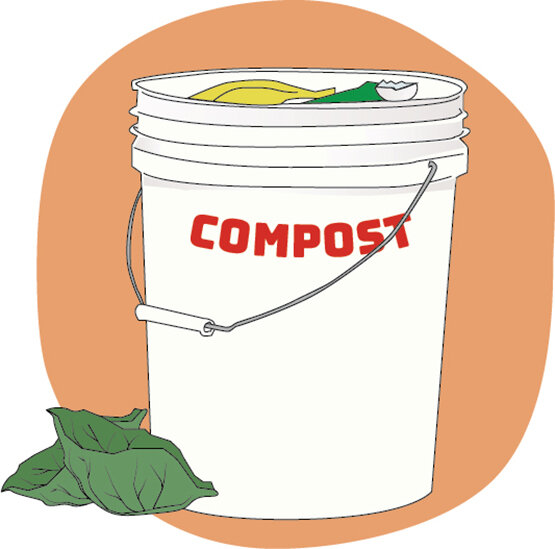Of Mousy and Elephantine Cycles, Managing Climate Crisis after Glasgow COP26
January 14, 2022
The word hypocrisy has been bandied about on the heels of the Glasgow Climate Pact, reached by unanimous consent of nearly 200 nations, as goals remain unmet and the international community has failed to restructure, implement, and enforce laws to do more to address climate change.
That stated, the international community cannot make binding commitments nor is it responsible for failures to meet national goals. That is the work of nation states. Time to recalibrate expectations.
The centrality of the ocean to problems related to extreme weather events and climate finally has been recognized. The Glasgow Climate Pact makes direct reference to the need to ensure the integrity of ocean ecosystems and the “importance of protecting, conserving and restoring natures and ecosystems, including marine ecosystems, to achieve the long-term global goal of the Convention by acting as sinks and reservoirs of greenhouse gases and protecting biodiversity, while ensuring social and environmental safeguards.”
It’s a further significant step forward to call for “an annual ocean-climate dialogue” to be held in June 2022 by the Subsidiary Body for Scientific and Technological Advice to formally anchor the Ocean Within the Climate negotiations. Nations controlling 85 percent of lands covered by forests have pledged to stop deforestation by 2030, yet no such measures are being taken for the ocean because much of it is international waters and beyond the jurisdictions of nations.
There’s no point in arguing over what biome is most important for climate. Focusing on only one, even the largest one, will not solve the global problem. We must practice responsible stewardship for the entire planet as if it were one living ecosystem. Dramatic restructuring of international laws and institutions is a waste of energy when climate impacts are local. Solutions must be indigenous place-based, bioregion by bioregion and watershed by watershed, to be effective. What’s good for Greenland may not be best for Manhattan.
Speaking of the ocean, the challenge of climate change would be addressed more effectively if a focus on restoring the hydrologic water cycles equaled the focus on fossil fuel burning. The atmospheric rise of carbon dioxide, measured in parts per million (ppm), makes for a compelling hockey stick graph that matches the rise of the Industrial Revolution. Graphing the rise of desertification and the tarmacking of the land is a very similar graph. Here, the bad actor is not as clear as fossil fuel use because the water cycle is involved. Water vapor is a greenhouse gas measured by percent or parts per hundred. Water vapor, say at 40 percent humidity, is a much larger greenhouse gas than carbon (400 ppm), by a thousand times.
The climate crisis worsens the more we destroy and separate from nature. Nature turns the elephantine water cycle, unlike a big portion of the mousy carbon cycle driven by fossil fuel burning. Researchers have calculated that heat-trapping water vapor is responsible for 60 percent of global warming. The cycles of all greenhouse gasses are explained as turning like clockwork and devoid of life. Yet, healthy ecosystems are what makes life possible on Earth.
At the darkest hour, plants open stomata to release water vapor. Morning dew is actively formed by plants precisely at the coldest time of day. Condensation is an exothermic reaction when water vapor molecules come into contact with cooler molecules. Energy is given up as heat when water vapor changes state into liquid. This plant-driven hydrologic cycle brings warmth before the rising sun’s rays reach the ground.
You may notice that the coolest spot in the city on a hot summer day is not the shadow under an awning but rather the shade of a big sidewalk tree. Plants release water that evaporates when it is hot. Energy is absorbed during this endothermic reaction and the surrounding air is cooled. Restoring and increasing vegetation in neighborhoods reinvigorates local water cycles to lessen the daily hot and cold temperature swings attributed to climate change.
Of all plants, grasses are the best at drawing carbon dioxide out of atmosphere with photosynthesis and pushing out liquid carbon as carbohydrates to build soil. An established grass lawn that is not fertilized and cut no more frequently than every two weeks may build an inch of soil in a year. (Fertilizing keeps grassroots near the surface thirsty for more and kills beneficial nematodes in the soil.)
With 4 inches of soil, the lawn may hold 7 inches of rainwater further protecting homes from extreme weather events. Researchers have found indications that if we could retain more water in our landscapes, let less storm and sewer water go into our waterways, we could reduce sea-level rise by 25 percent.
Let’s restore life to both land and sea, to watersheds, and the full fresh/saltwater continuum. Only then can we experience less extremes in the weather and a lessening of the climate crisis. The learning curve is steep given the complexity of each ecosystem. Act locally to improve the global wellness of the planet and then we may gather by the Red Sea at the next Conference of the Parties (COP), perhaps virtually, to listen and learn from one another on how we can be even better stewards of the planet. Together we can.
Rob Moir is the president and executive director of the Massachusetts-based Ocean River Institute, a nonprofit providing expertise, services, resources, and information to support the efforts of environmental organizations.




I agree that restoring watersheds, brackish and marsh areas, and the oceans are all vital elements of combating not only climate change but also the current catastrophic loss of biodiversity. But excuse me? Water vapor is a greenhouse gas, yes, but there is more water vapor in the air because carbon emissions from fossil fuels are heating the planet. It’s a positive feedback loop. I would appreciate a footnote for the claim that water vapor causes 60% of global warming.
And lawncare? We have plenty of native plants that help improve topsoil and manage water, so why not advocate something good for biodiversity, like rewilding?
The climate crisis demands more radical action than this.